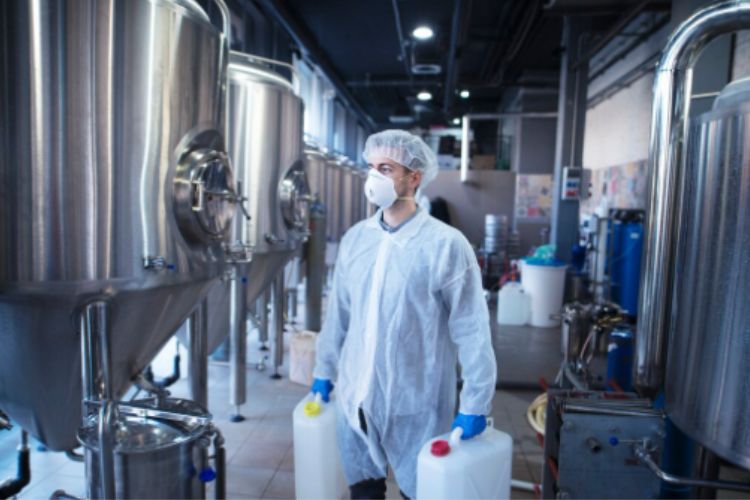Ever wondered how a raw polymer becomes one of the toughest and most versatile materials in modern industry? The journey of Ultra High Molecular Weight Polyethylene (UHMW-PE) is nothing short of fascinating. Behind every sheet, rod, or wear plate lies the precision and expertise of ultra high molecular weight polyethylene manufacturers who blend chemistry, technology, and engineering to create materials built for endurance.
The Science Behind UHMW-PE’s Strength
UHMW-PE isn’t just another plastic—it’s a super polymer. With molecular chains 10 times longer than conventional polyethylene, it boasts exceptional wear resistance, impact strength, and a near frictionless surface. That’s why it’s trusted in industries ranging from mining and food processing to marine and medical applications.
But achieving that level of performance isn’t by chance. It’s the result of a controlled, multi-step process that begins with raw polyethylene resin and ends with high-precision finished products.
Step 1: Selecting Premium Raw Materials
Every great product starts with the right ingredients. UHMW-PE manufacturing begins with carefully selected ethylene monomers that meet strict purity standards. These are polymerized using advanced catalysts under specific conditions that encourage ultra-long chain formation.
- Purity: Impurities can weaken molecular bonds, so manufacturers often source resin from certified suppliers.
- Consistency: High-grade resin ensures uniformity in molecular weight distribution.
- Traceability: Many companies now use digital tracking systems for material sourcing to guarantee quality compliance.
Step 2: Polymerization and Powder Formation
Once polymerization begins, ethylene molecules link together, forming incredibly long chains that give UHMW-PE its signature toughness. The result is a fine, waxy powder with a dense molecular structure. This powder forms the base for sheets, rods, and custom components.
According to a study by NIST.gov, longer molecular chains significantly enhance abrasion resistance and load-bearing capacity—two key reasons industries prefer UHMW-PE over traditional plastics.
Step 3: Compression Molding and Sintering
Unlike other plastics that melt and flow, UHMW-PE is too viscous to be injection molded. Instead, it’s sintered—a process where the powder is compressed under high pressure and heated below its melting point. This causes the particles to fuse without losing molecular integrity.
The process demands precision. Even small variations in pressure or temperature can affect density and performance. It’s a delicate balance that separates world-class manufacturers from the rest.
Step 4: Machining and Finishing
Once sintered blocks are cooled, they’re machined into final forms—sheets, rods, liners, or custom components. CNC machining ensures accuracy and uniformity across batches, especially for applications like conveyor parts, marine fenders, or outrigger pads.
In fact, several UHMWPE Outrigger pads suppliers near me rely on precision-machined UHMW-PE blocks for producing pads that can handle massive crane loads without cracking or deforming.
Step 5: Quality Testing and Performance Assurance
Before any UHMW-PE product leaves the factory floor, it undergoes rigorous testing—both physical and chemical. Key performance indicators include:
- Density and Molecular Weight: Determines overall toughness and longevity.
- Coefficient of Friction: Ensures smooth, low-resistance movement.
- Impact and Wear Testing: Simulates real-world industrial conditions.
Quality assurance isn’t just a box-ticking exercise—it’s what gives customers confidence that their UHMW-PE products will perform consistently for years.
Technology Meets Sustainability
Today’s leading UHMW-PE producers are integrating sustainability into production. From recycling offcuts to using cleaner energy sources, the goal is to reduce environmental impact without compromising performance. Some are even experimenting with bio-based ethylene sources—ushering in a greener generation of high-performance plastics.
Beyond the Product: Applications That Define Performance
UHMW-PE’s versatility is evident in its applications. It’s used in bulk material handling, lining chutes and hoppers to reduce friction, and extending equipment life. To explore more, see How Bulk Material Handling Systems Benefit from Specialty Polymers, which highlights how advanced polymers like UHMW-PE improve operational efficiency.
FAQs About UHMW-PE Manufacturing
1. What makes UHMW-PE different from regular polyethylene?
UHMW-PE has extremely long molecular chains, giving it superior wear resistance, impact strength, and low friction compared to HDPE or LDPE.
2. How do manufacturers ensure the quality of UHMW-PE products?
Through precise polymerization, controlled sintering, and rigorous testing for density, strength, and frictional properties before shipment.
3. Is UHMW-PE environmentally friendly?
While it’s not biodegradable, UHMW-PE is recyclable, long-lasting, and increasingly being made using energy-efficient, low-emission processes.
4. What are the main uses of UHMW-PE in industry?
It’s widely used for conveyor systems, marine dock fenders, crane outrigger pads, liners, and wear-resistant components.
Final Thoughts
The journey from raw ethylene to high-performance UHMWPE is one of precision, innovation, and commitment. Every stage—from polymerization to machining—reflects how ultra high molecular weight polyethylene manufacturers bring science and sustainability together. As industries demand stronger, cleaner, and more efficient materials, UHMW-PE continues to set the benchmark for what’s possible.



